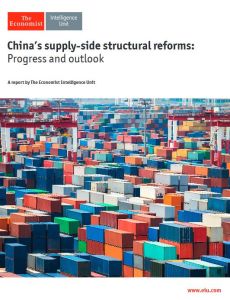Join getAbstract to access the summary!

Join getAbstract to access the summary!
The Economist Intelligence Unit
China’s Supply-Side Structural Reforms
Progress and Outlook
EIU, 2017
What's inside?
China’s sweeping reforms, designed to reshape its economy, face several challenges.
Recommendation
As the world’s second largest economy, China continues its ascent despite troubling challenges. Its leaders’ efforts to continue the country’s dynamic growth, while transitioning the Asian giant toward a more consumer-centric economic model, depend on instituting comprehensive “supply-side structural reforms” (SSSR). In this thorough analysis, the Economist Intelligence Unit offers insight and perspective on SSSR and its components. getAbstract recommends this authoritative offering to executives, investors and policy experts interested in China’s economic development.
Summary
About the Author
The Economist Intelligence Unit is an independent research and analysis organization.

















































































































Comment on this summary